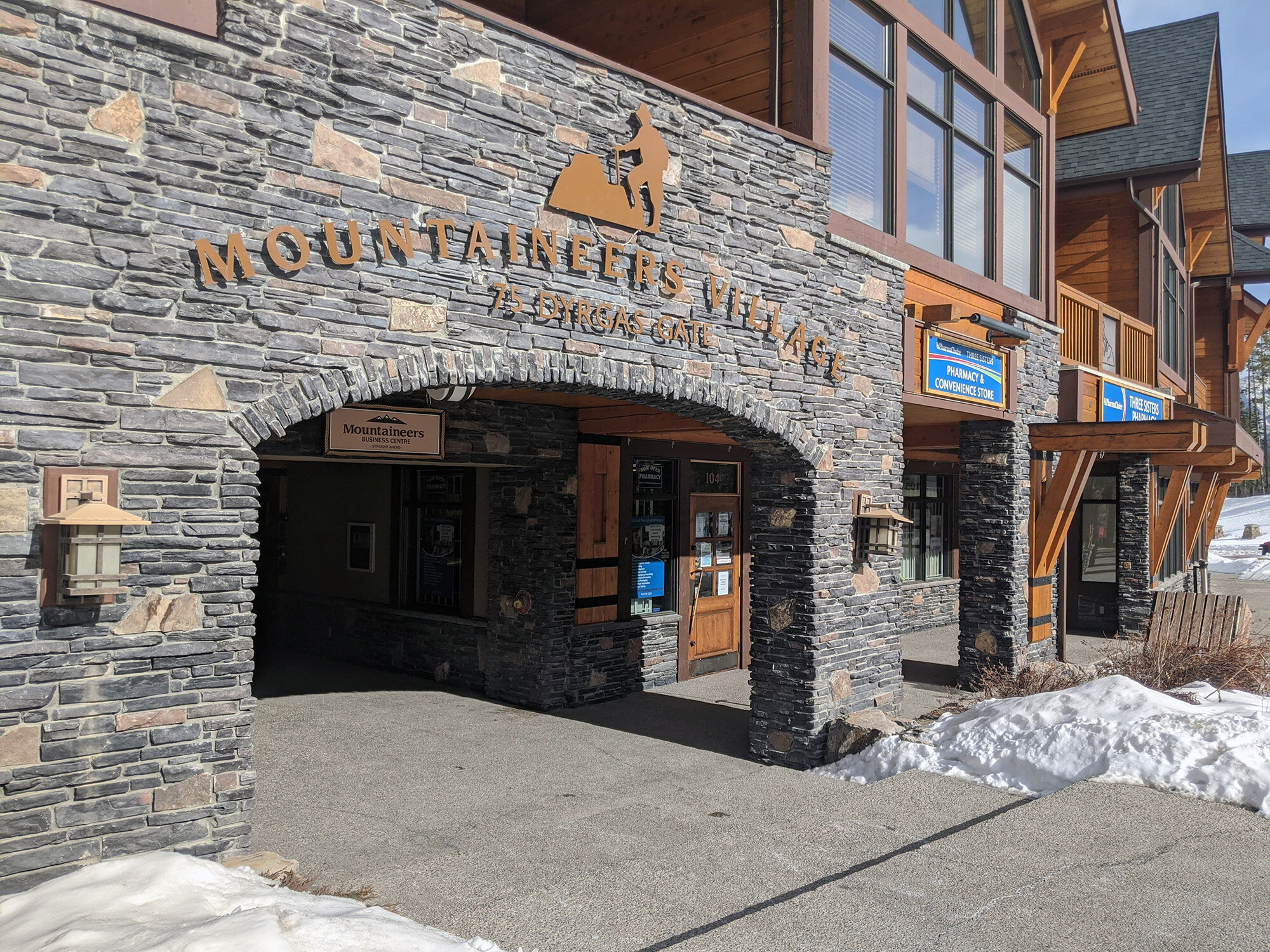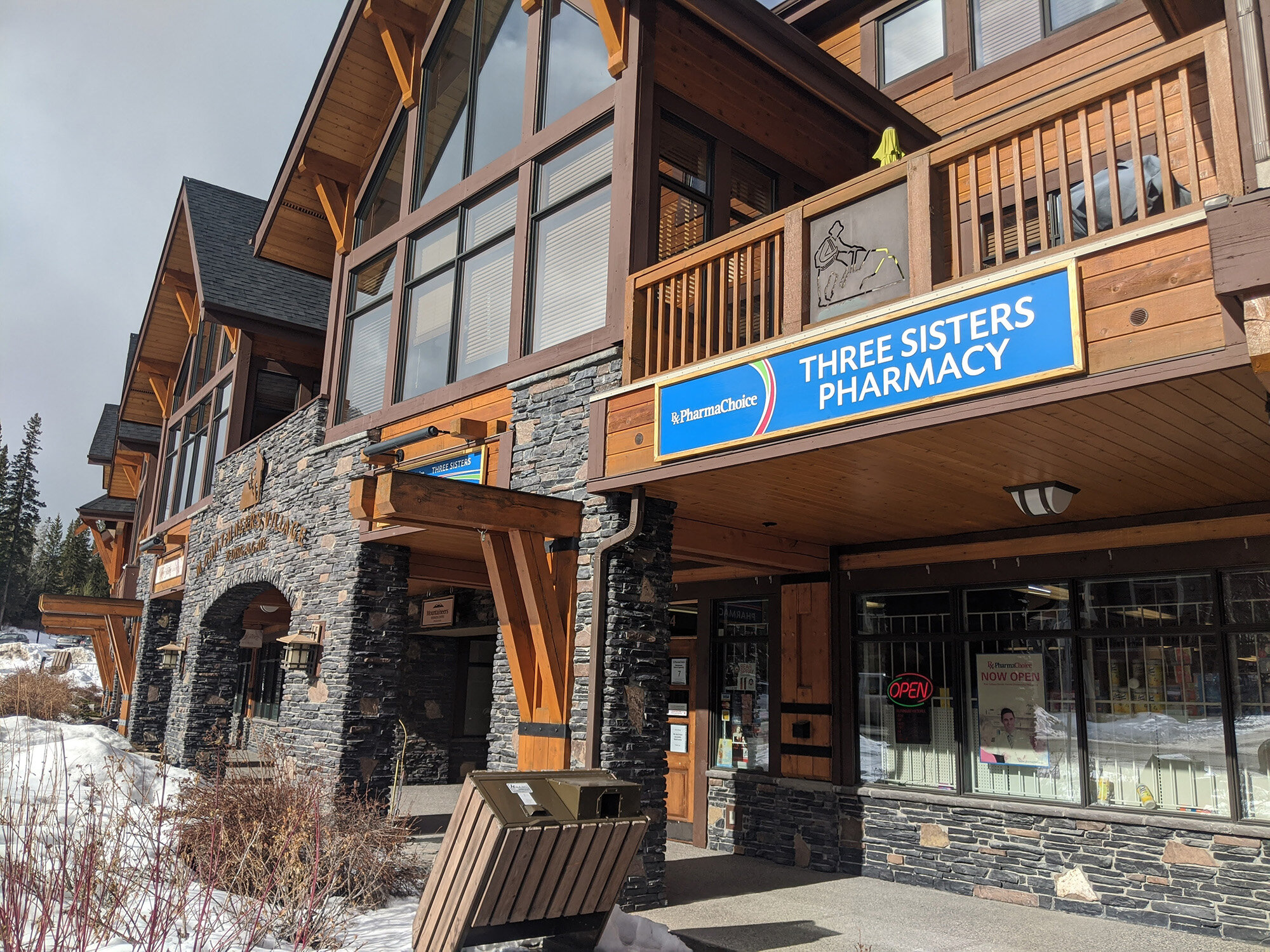A financial expert’s analysis of Three Sisters’ latest ASPs
Protecting our interests
Here, a uniquely-positioned financial expert lays out why Canmore must ensure that the promises of the commercial elements of Three Sisters Mountain Village’s latest area structure plans are kept.
TSMV's latest plans claim to bring financial stability to Canmore.
That didn’t sit right with Roderick de Leeuw. The financial expert took a deeper look at the financial responsibility and sustainability of the latest TSMV area structure plans (ASP).
Rod was Chief Financial Officer and general manager with the Town of Canmore from 1999 through 2010, and he also worked with TSMV team in the late 1990s, making him uniquely positioned to share insight in his analysis of the ASPs.
Overall, de Leeuw exposes extensive financial unsustainability in the ASPs, for both the Town of Canmore and its residents.
One major reason? Taxes. Beyond places to shop, gather and work, commercial and retail development generates taxes. Without commercial tax revenue, Canmore would run at a net loss because residential properties require more services and cost more to run than they generate in taxes.
In TSMV’s fiscal impact study, it is clear a net positive is only possible when all commercial spaces are filled and valued appropriately — something that has historically failed to happen with previous ASPs.
Proving his point
De Leeuw was one of a number of experts who presented and answered questions from the community at a Feb. 23 Bow Valley Engage town hall meeting (below). Some concerns he raised:
The duration of TSMV’s development plan.
A lack of sufficient commercial tax base to support the community.
Unsustainable residential tax rate trends since 2010.
Demonstrated through de Leeuw’s review of tax and utility increases from 2010 through 2020 shown in his presentation, he argues these concerns leave folks and councils in the future to carry the burden of financial liability. In the past decade, residential taxes have gone up substantially, at a rate that is not sustainable. This, in spite of the promises of fiscal benefit by TSMV.
Currently, taxes in Canmore double every 12 years. If this trend continues, it contributes to a net negative financial impact and is unsustainable. And de Leeuw thinks it is likely to continue unless the commercial assessments contained within the ASPs are fully developed.
View de Leeuw’s presentation (beginning at 1:11:00) here.
On top of a history of promises not being kept, there is no enforcement mechanism to ensure that promises of commercial development are fulfilled. In a letter to town council, de Leeuw states the ASPs contain no performance-based clauses or measures. This leaves the Town with no bargaining power when conditions of development are not met.
There is also the matter of the 30-year span. TSMV has already entered bankruptcy once. Since 1982, there have been multiple bankruptcies with other developers. On the cusp of post-pandemic debt and recovery, what are the chances of it happening again? Is there a path forward?
A lot can happen in a year — let alone 30
Mountaineers Village in Three Sisters Mountain Village on a sunny afternoon in February 2021.
There are significant financial risks within TSMV’s development plan, one that is expected to span three decades. In de Leeuw’s analysis and opinion, he states this period is too long, “shackling” residents of the future and introducing financial uncertainty.
A lot can happen in that time, he says, pointing to the fact that since 2019, the Town has declared a climate emergency and faced a pandemic. Additional threats include the risk of natural disasters such as floods and wildfires.
The length of time also places a heavy burden of responsibility on the town for maintenance and replacement of infrastructure, including but not limited to issues such as undermining. Financial risks related to infrastructure means communities don’t know what they’re going to get 10, 20, or 30 years down the road.
Operational risk is another source of instability. De Leeuw says community services may be invested in, but may not materialize.
“For example, you might build a large transit system to service that new area. You’ll buy new buses and hire new employees, assuming you’ll get ridership. All of a sudden ridership doesn’t show up, the net effect on taxes is greater than expected. You now have additional financial risk because of those new services you’ve had to provide,” he says.
“A case of bait and switch”
Because residential areas cost more to service than they generate in taxes, a lack of commercial development threatens to impact taxes or maintain a trend that is untenable. That means fiscal sustainability cannot be achieved through residential taxes alone.
In TSMV’s fiscal impact study, it is clear a positive impact is only possible when all commercial spaces are filled and valued appropriately.
“Positive financial impacts cannot be promises,” says de Leeuw.
Since the mid-1990s all ASPs (submitted by Three Sisters) included commercial development, mainly for the appearance of fiscal sustainability, something that makes them attractive to the town because they promise to keep residential taxes low, says de Leeuw.
The reality is that what actually gets developed is different. “Residential development is too lucrative for developers, commercial development is risky and more problematic to develop,” he says. So naturally the residential gets built, the commercial gets shelved.
For example, the 2004 Stewart Creek ASP promised 33,000 square metres (355,210 square feet) of commercial development.
Today, 25 years later, there are just two small commercial buildings in the area: a 112-unit WorldMark Hotel at the west end of Three Sisters Drive, and Mountaineer’s Village at Dyrgas Gate, a small mixed-use strip mall with a pharmacy, bistro, liquor store and some medical services and offices.
TSMV’s approved 2004 Resort Centre ASP was intended to be 100 per cent commercial space. De Leeuw’s analysis of the revised plan for the area, what is now being referred to as Village Centre, shows only 15-20 per cent commercial zoning.
Since 1995 the majority of Three Sisters development remains residential, or about 96.4 per cent of $1.4 billion assessed.
Images of Mountaineers Village.
If you build it, will they come?
One of the most compelling parts of de Leeuw’s analysis is that zoning commercial space does not mean that it will actually be built.
“We can’t take their word that the commercial will come. We’ve seen over 25 years that the commercial never comes,” he says. “It’s time to hold developers accountable.”
For years people living in Three Sisters have had very low density and availability of commercial and retail services. Residents must bus, bike or drive downtown for groceries and other daily needs.
Entrance to the site of a future retail development called The Gateway. If approved, this would be the first commercial zone addition to Three Sisters Mountain Village since 2006.
Looking at what’s happened in the past, the trend is clear: the promise of commercial development is just that, a promise. Exploring the retail options currently in Three Sisters Mountain Village proves that, with just a hotel and small commercial strip.
In fact, it is only now, 17 years after the last ASP was approved, that the next stage in commercial development is proceeding in Three Sisters. A development dubbed The Gateway has been proposed at exit 93 of the Trans-Canada Highway near the four-way stop on Three Sisters Parkway, with a grocery store and gas station. The rezoning also includes discretionary uses for a brewery/distillery, drive-thru restaurant and light manufacturing.
In a Feb. 4 article in the Rocky Mountain Outlook about the project, QuantumPlace Developments planning principal Jessica Karpat said, "With the introduction of commercial uses at The Gateway of Three Sisters, we are providing Stewart Creek and existing Three Sisters residents with access to more sustainable transportation choices. Walking to local commercial services would be much easier and it introduces a number of services that are not already there."
This is one of the final parcels from the existing TSMV Stewart Creek ASP approved in 2004 to be developed. According to TSMV’s 2020 fiscal impact study, The Gateway is anticipated to have 250,000 square feet of non-residential development including offices, service commercial and restaurants, as well as residential units and employee housing.
It is only now that existing development in the surrounding residential neighbourhoods supports commercial development, Karpat said when speaking to the RMO. The construction and build out for The Gateway, if rezoning is approved, will take place over the next five to seven years.
In the same article, QuantumPlace Developments managing principal Chris Ollenberger admitted The Gateway is a “little bit of a different shift,” as unlike similar projects, it will be built by and owned/managed by TSMV.
Is there a path forward?
De Leeuw’s recommendations are simple and encourage a conservative approach. A decision of this magnitude deserves caution and carefully considered planning.
“The ASPs as presented provide a significant downside financial risk to the Town of Canmore, I really don’t see an upside in any way. These financial impacts cannot just be promises. There must be a degree of certainty. The historic pattern and trends do not support the fiscal sustainability contained within the ASP.”
De Leeuw recommends the Town develop commercial and residential zones in tandem. This would ensure commercial development is built before, or at the same time, as residential and/or contain clauses where residential development can proceed only as certain milestones are met on the commercial side.
The fall out if this is not addressed? “Significant net negative fiscal impact for the Town’s finances (that) continue to put pressure on the municipal tax rates.”
De Leeuw’s recommendations
The ASPs must:
Minimize financial uncertainties and maintain future control by council;
Contain as much commercial development as is negotiable;
Have commercial and residential development act in tandem: contain measures to ensure commercial development is built before or at the same time as residential;
Contain clauses where residential development is permitted only as certain milestones are achieved on the commercial side.
We asked de Leeuw what the future would look like if these ASPs were approved but taxes did not match need.
“Running a town on credit is not a good idea. When running a town, you want to pay-as-you-go as much as you can. It’s a thousand good decisions by community members, council, financial department and others to make sure we're responsible,” he says. “I’m trying to encourage council to be smart about our development. We can't just say yes because [developers] say it's going to work.”
During his time making presentations and sharing his findings with others in Canmore, de Leeuw says he keeps coming back to one thing.
“We've heard nine solid reasons why to say no. Many of us feel there is a huge case to say no — I'm kind of wondering why we should say yes.”
While he acknowledges there is a good case to be made for temporary jobs related to construction, looking at the bigger picture he wonders if they're worth taking all the risk for.
“Is it worth destroying environmentally sensitive areas for non-permanent homes? Does a temporary job outweigh a forever burden on our tax base?”
For now, the decision is still in the hands of Canmore town council and citizens. Several days of statements for or against the decision are expected at the hearing starting March 9, including from de Leeuw. Then it’s up to the town to decide.












